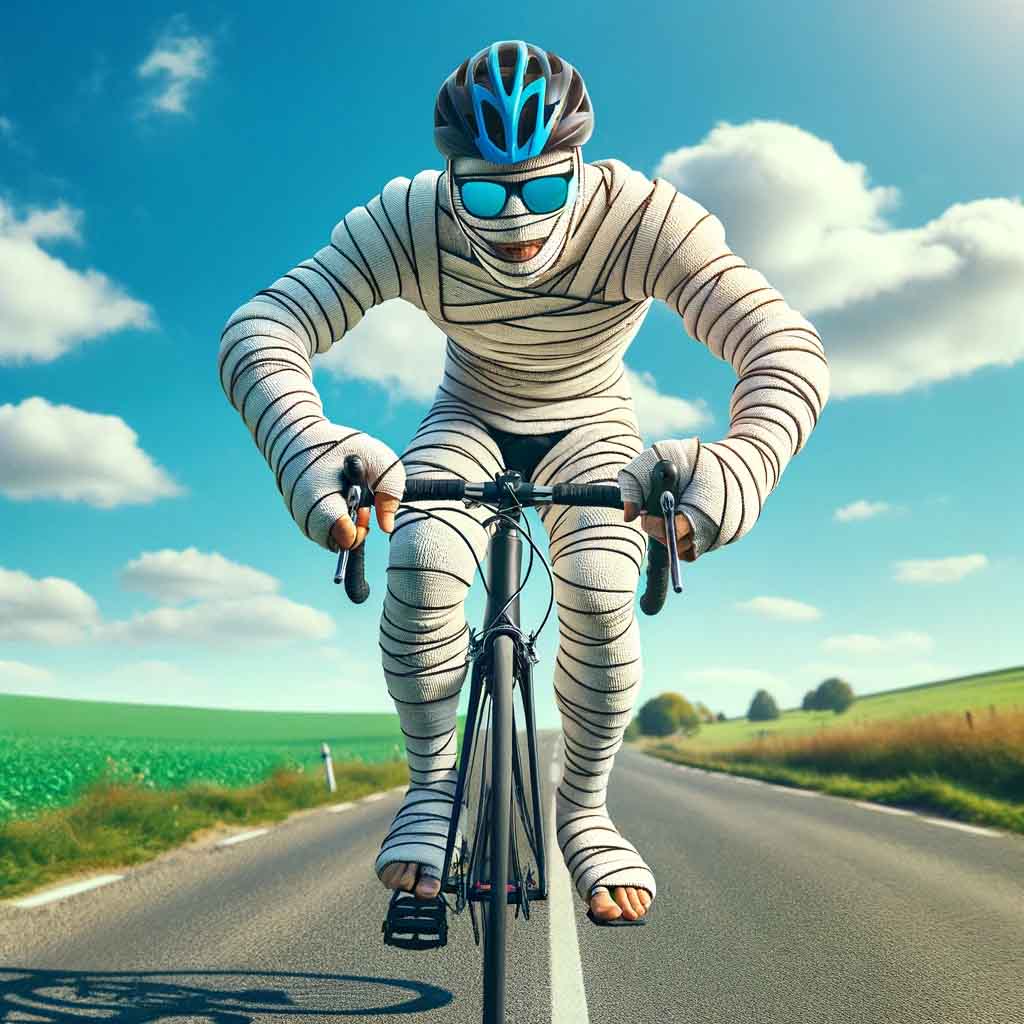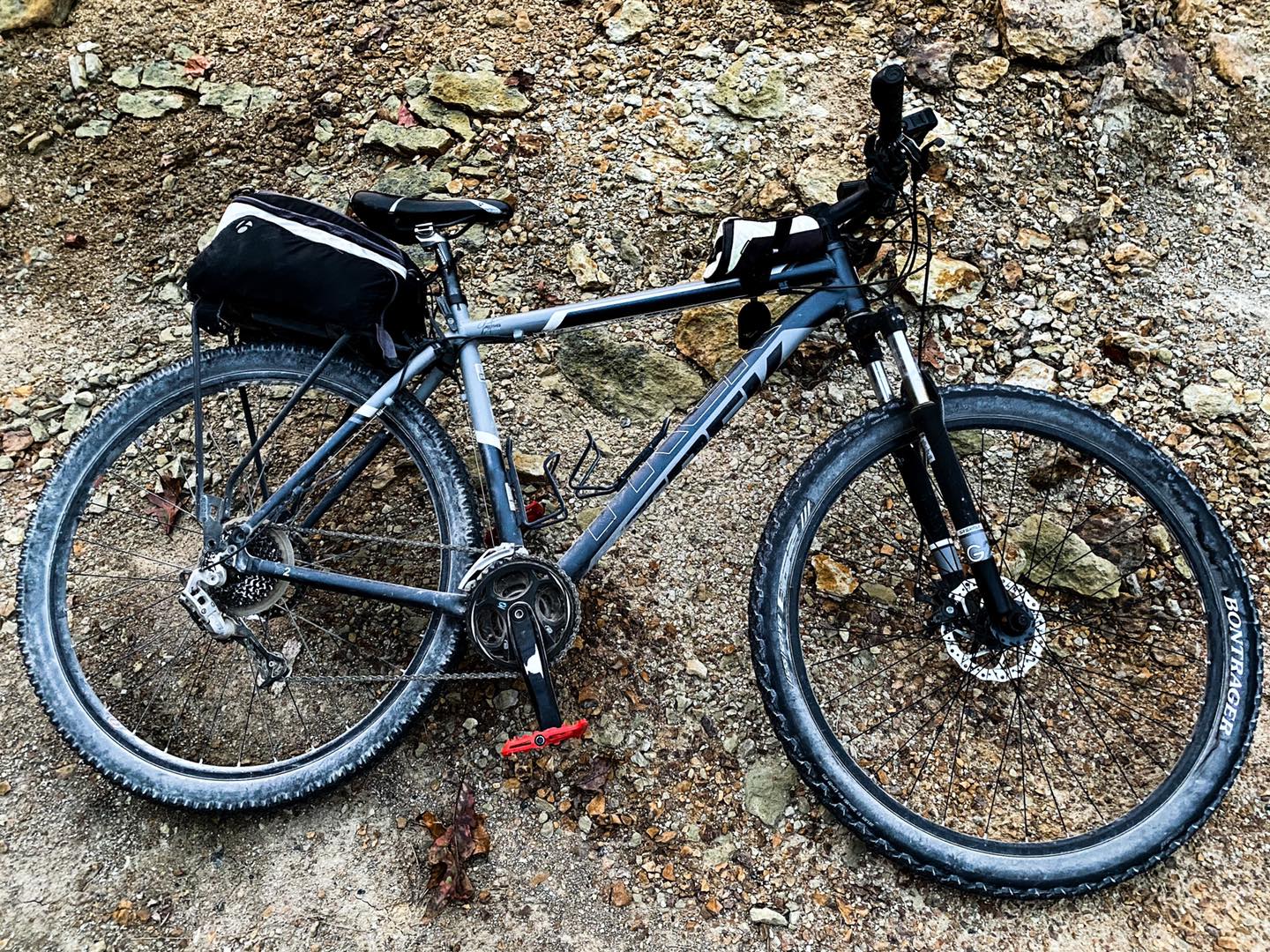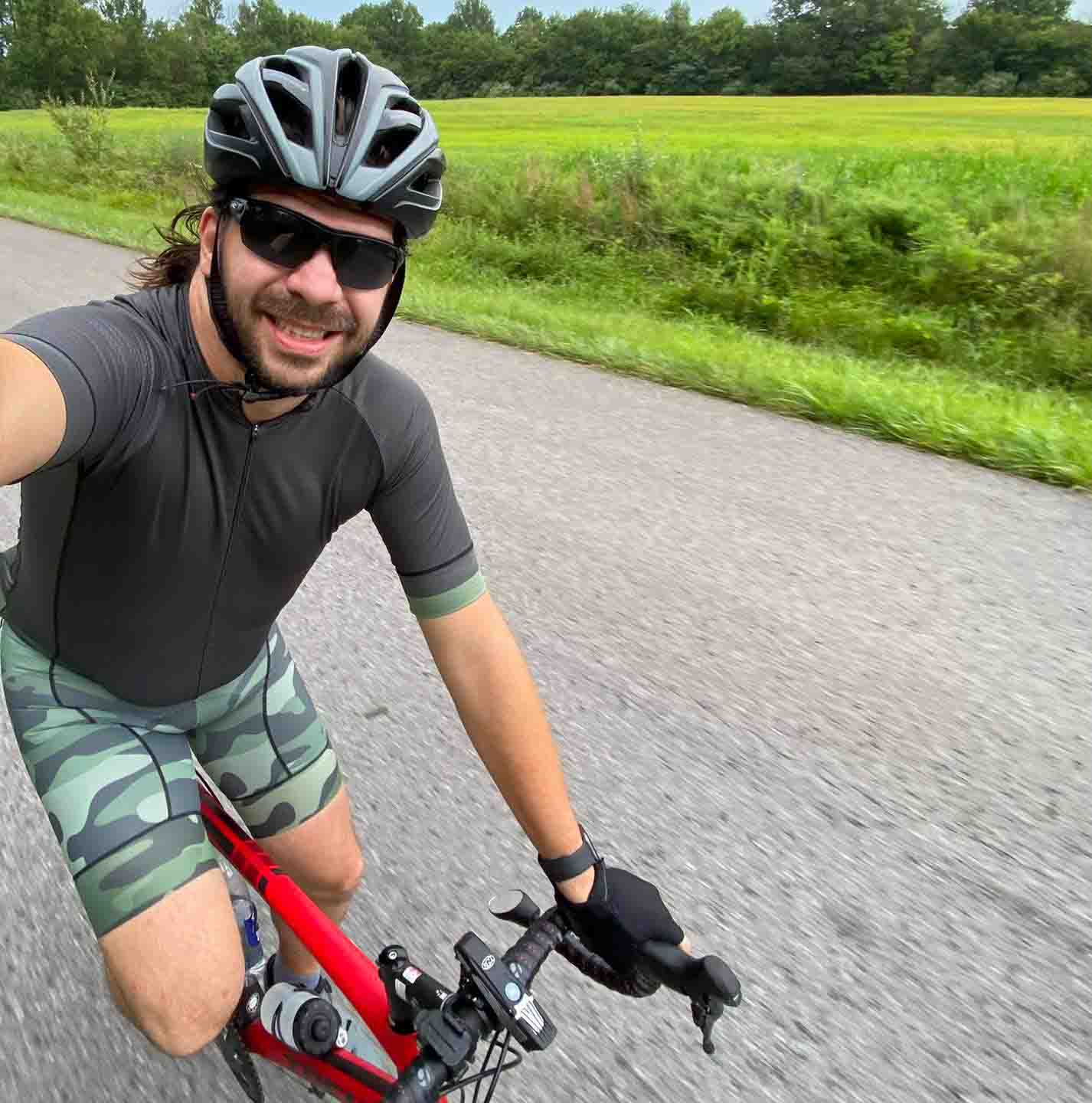A Guide to Common Cycling Injuries
The following is a guide to common cycling injuries, the causes, and what to do to avoid these injuries.
Cycling should be about having fun, getting stronger, and maintaining endurance.
It shouldn’t be about pain and injury. However, sometimes, you are injured during cycling. Lucky for you, most of the common cycling injuries are completely preventable.
In this guide, I’ll provide the knowledge you need to identify and prevent common cycling injuries.
The information in this guide is for educational purposes only. This is not meant to be medical advice. Please seek assistance from your care provider for long-lasting injuries and pain.
Common Cycling Injuries: Causes and Prevention
The following information outlines common cycling injuries and the causes and prevention guidelines for them. This information is intended for educational purposes and not medical advice.
Knee Pain
There are multiple causes of knee pain in cycling, including:
- Overtraining
- Bad Cleat Position
- Incorrect Frame Size
- Bad Saddle Position
Preventing knee pain can be done by addressing the issues that may be causing it.
Maybe you need to slack off from training and take a rest day. You may need to adjust your cleat position on your cycling shoes and ride until the pain is gone. You might need to lower or raise your saddle to prevent the pain. In some cases, you may need a different frame size or a change of components.
Before you purchase a bike, you should try to get a proper fit, as a bad fit can be a costly error after you have purchased it.
Lower Back Pain
In most cases, lower back pain is often due to a bike that doesn’t fit you properly.
Typically, the only way to solve this issue is to get another bike frame or bike that has been fitted for you.
Bike fit is extremely important when it comes to preventing pain and common cycling injuries.
Neck Pain
There are a few different causes of neck pain to be aware of as a cycling.
- Bad bike fit
- Bad cycling posture
- Bad stretching habits
As you can see, bike fit is mentioned again. I’ll reassure you of the importance of a properly fitted bike. Many new cyclists make this common mistake, and sadly, they experience pain and common cycling injuries because of it.
Get a proper bike fit from a local bike shop before making any bike purchasing decisions.
Aside from that, make sure you’re in a good position and posture while riding your bike. You should be comfortable, not straining your neck or shoulders. Bend your elbows slightly and make it a habit to ride like that.
Practice proper stretching on and off your bike. While riding, shrug your shoulders to help stretch them out. This will prevent a lot of pain.
Hand/Wrist Pain
Of all the common cycling injuries and pain, those that affect the hands and wrists are very likely to happen with every cyclist at some point.
There are a few reasons for hand and wrist pain in cycling.
- Not wearing gloves
- Not changing hand positions
- Putting too much weight on your hands
Luckily, this type of cycling pain can be completely prevented and easily at that.
Use a pair of padded cycling gloves to cushion shock and reduce friction on the hand. You might find that unpadded gloves help more than padded ones, so it’s a good idea to experiment.
While riding, change the positions of where you put your hands every couple of minutes or so. This prevents you from putting too much weight on your hands for the duration of your bike ride.
Try to relax your upper body and avoid leaning into your hands too much. Balance your weight.
Prevention of these common cycling injuries and pain is very simple but also very important.
Butt Pain
I would bet that the number one of the most common cycling injuries and pain is butt pain.
The most common reason for this is not cycling with padded shorts.
Bike shorts aren’t just for looks. They are more of a functional apparel asset than a fashion. They’re built with internal padding that helps reduce shock, friction, and chafing. You should wear them on all of your rides if you’re getting butt pain or chafing issues.
You might also have to use chamois cream. This goes on the pad inside your shorts to help lubricate it. This is especially common for cyclists who are bigger in size and weight.
You should never wear underwear with your cycling shorts, as that will likely cause chafing.
If you’re still having butt pain while cycling, you may also need to adjust your saddle height as well as the position of your saddle.
Head Pain
Head pain and injury occur when you have an unwanted impact. This is often caused by wrecks, where your head impacts the ground and other objects.
This type of injury can be severe. It can cause serious health problems or even death.
The best way to prevent head injuries is to wear a bike helmet on all of your rides.
Hip Pain
Hip pain is commonly caused by improper saddle height or lack of stretching.
It can also be due to bad bike fit.
Ensuring you have a proper bike fit will be the best way to prevent hip pain.
You should also do a daily stretching regimen, as stretching can help reduce a lot of pain.
Nausea/Cramping Pain
If you feel nauseous, sick, or you are starting to cramp up while you’re cycling, you’re most likely experiencing issues with fueling or hydration.
This is among the most common cycling injuries because we’re bad about proper fueling and hydration. It can easily ruin a ride and mess up your training plan.
Try to eat something every thirty minutes, even if it’s a bite of an energy bar, a handful of trail mix, or a pack of energy gel. After that, take a couple of big swigs of your hydration. Doing this every half hour will help you remain fueled and hydrated for your ride.
Final Thoughts About Common Cycling Injuries
There are a few common cycling injuries and pain that are bound to happen at some point. You can prevent most of them from occurring, though. Before taking my advice to heart, be sure to consult with your medical care provider to get accurate recommendations.
This information is intended for educational purposes and is not medical advice.
If you’ve enjoyed this article, please share it with other cyclists you know. Consider giving me a one-time donation for posting this article for free.
Subscribe to my free newsletter for more cycling tips and resources sent directly to your inbox every week.
About Shawn Gossman
Shawn Gossman is the author of this post and founder of the Beginner Cycling Tips Blog.
Shawn has been an avid cyclist for around 12 years. He road, gravel, mountain, and trail bikes. He likes adventuring more than racing.





Trackbacks/Pingbacks